The USA Cycling National Championships start tomorrow in the Evergreen State. At this point in the year, riders who are going have likely already made their final preparations for the trip to Lakewood, Washington.
In addition to managing logistics of getting bikes and people to the Pacific Northwest, many Masters and Singlespeed racers also have to consider the legality of their tires for the first time this season as they wonder if USA Cycling will be enforcing the 35mm width rule.
While the UCI has a tire width restriction of 33mm in place, USA Cycling set the bar at 35mm for most categories in 2010. Despite promptly ignoring its own regulations and allowing much wider tires into Nationals start grids over the years, riders were subject to tire measurements in Louisville.
As we take the last few corners in the lead up to Nationals, let’s take a moment to examine why USA Cycling should inflate the tire width rule to reflect the equipment amateurs are using to race cyclocross in 2019.
But First, a History Lesson
Just so we’re all on the same page here, I’ll remind readers how we got here. In 2010, at the same time it allowed disc brakes, the UCI adjusted its 35mm maximum tire width rule in cyclocross down to 33mm, citing a desire to reduce the amount of equipment high-level privateers and Juniors needed to own and travel with to be competitive.
In a more practical sense, the ruling had the opposite effect and left pros scrambling to get their equipment race-legal and left the most budget-constrained racers (think tubeless) more constrained than before.
Although the UCI restrictions only applied to UCI-sanctioned racing, not races under the jurisdiction of a national organization, USA Cycling also adopted the 33mm limit. After pushback from its members, USA Cycling adopted the current 35mm rule, enforced in Bend, Oregon later that year, and later almost completely ignored at subsequent Nationals.
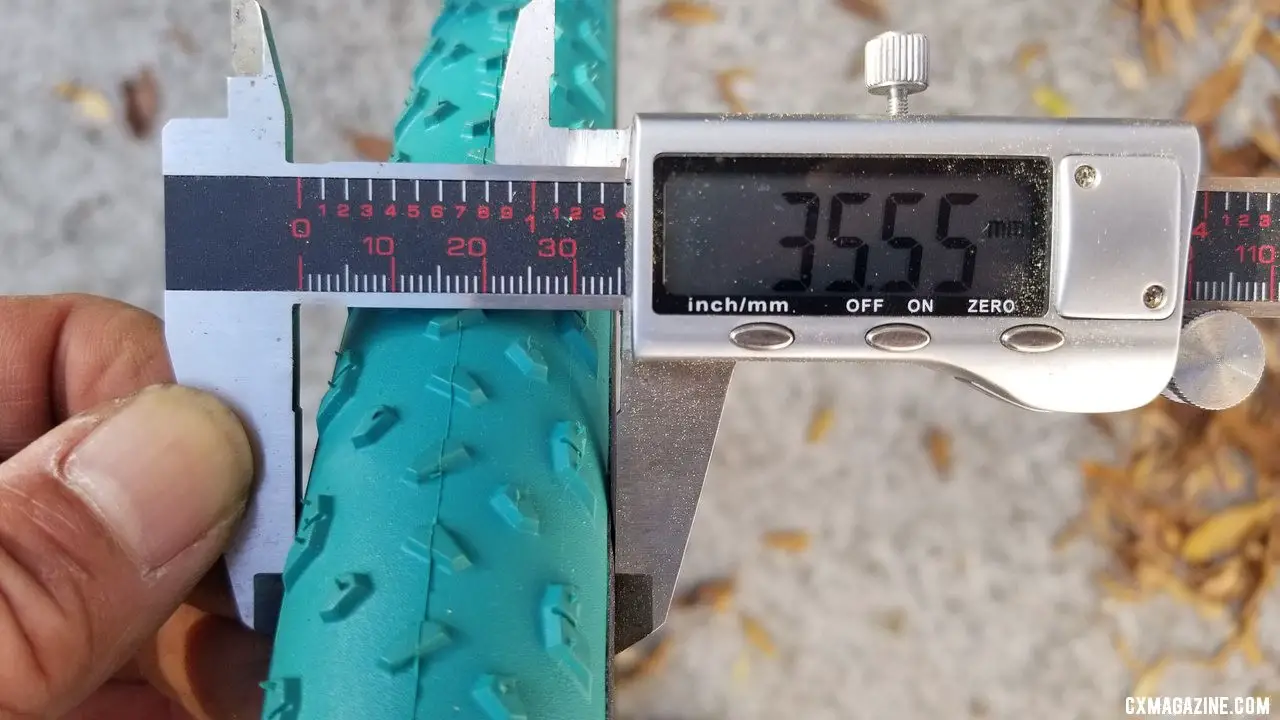
Check your rim and tire width before lining up for Nationals. The Michelin Mud inflated above 35mm on a 23mm internal width rim. The latest Michelin Power Cyclocross Mud tubeless clincher tire. © Cyclocross Magazine
At the same time, tire manufacturers jumped onto the 33mm bandwagon and more or less stopped producing tires larger than the maximum 33mm. Although almost no retail-paying customer in the United States (the largest cyclocross racing population in the world) was affected by UCI restrictions, racers were still impacted by them through reduced tire choices.
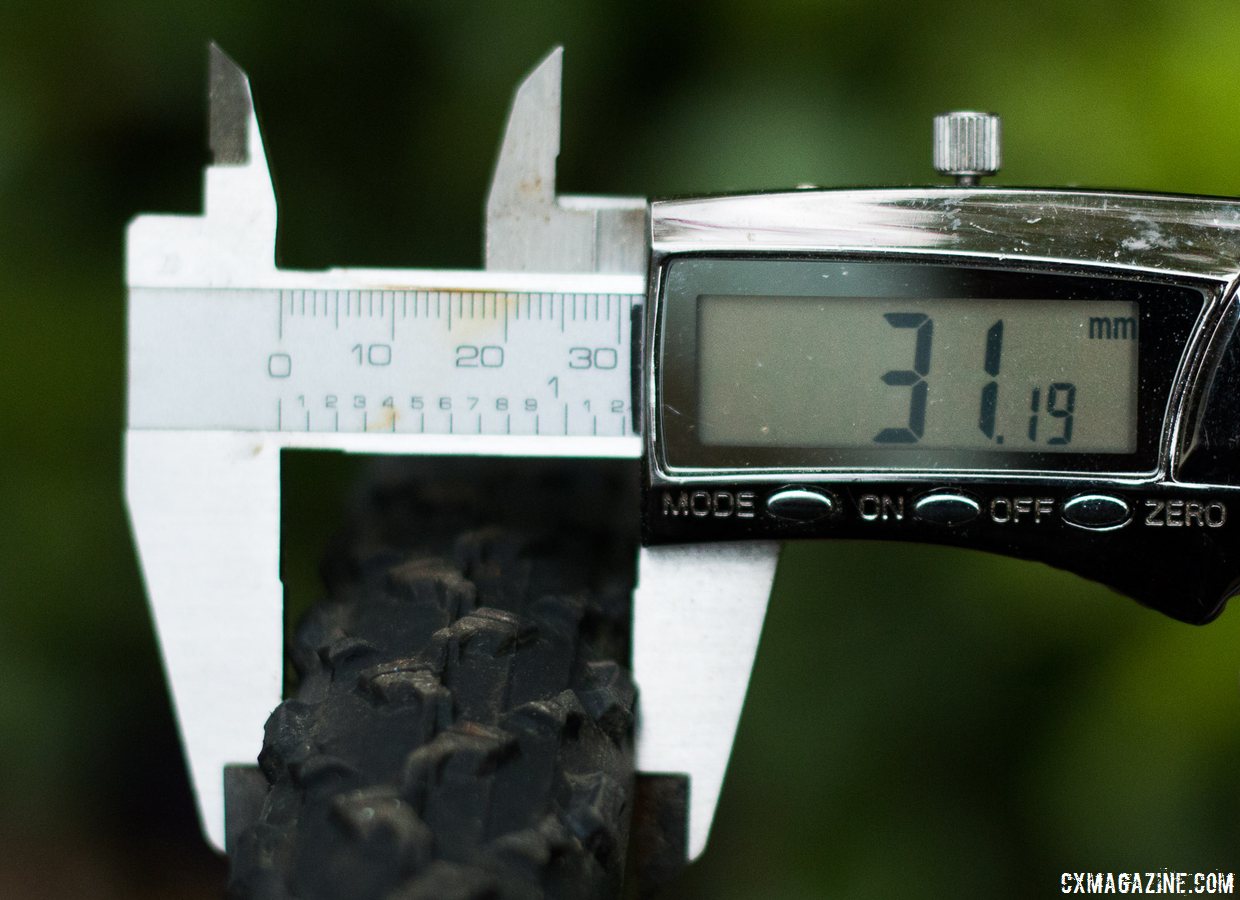
A Maxxis 33mm Mud Wrestler is just 31.2 wide at 25 psi on the Easton EC90 SL rim. © Cyclocross Magazine
A Single Race, Lots of Rules
With the exception of Elite, U23 and Junior categories, almost every entrant at Nationals will be facing equipment restrictions for the first time in their season. Although the majority of tubeless tires are listed by the manufacturer as 33mm, in reality, many of them are oversized on wider modern rims and exceed the 35mm limit.
The uncertainty leaves riders changing equipment they have used all season for a single race to comply with the rulebook. It adds expense and stress to an already costly proposition and adds another barrier to participation, something the sport doesn’t need.
Sure, it’s Nationals, but why discourage a few more locals from entering even if they will just be packfill? Nationals can be the gateway race to full immersion in the sport.
It is also worth pointing out that riders most likely affected by tire width restrictions, those using clinchers and tubeless tires, are not racing in a Category 1 field and lining up for UCI events multiple times a season. The riders most affected here are the recreational, participation-level riders, Age Group and Singlespeed racers.
Masters and Singlespeed racers are unlikely to start racing at the UCI level. Most are there for the experience and applying a tire width restriction very well could turn them off to the experience completely, especially after being told “run what you brung” works at every other race.
One may question singling out the 35mm restriction when USA Cycling also demands that Nationals participants use a drop handlebar while flat bars are legal at local races.
To that point, I would argue that the bar shape does not inherently restrict riders in the same way as a tire limit. Larger riders are not at an immediate disadvantage using a drop bar, nor is there a massive difference in pricing between a flat and drop-bar setup.
I would argue that the more limiting rule is USA Cycling’s 46 cm handlebar width restriction. Much like limiting tire width, a larger rider loses the stability benefits offered by a wider handlebar. With the popularity of flared bars, I’m sure many modern drop bars fail USA Cycling’s restrictions. Should we start measuring these at the start as well?
Yet I can’t argue with anyone who thinks equipment rules should be consistent throughout the season. If someone can dominate local races with a flat bar and higher volume tires, and we’re to discourage them from attending Nationals, are we sending the right message if we really want to grow the sport?
Retrograde Regulations
Equipment, especially wheels, are in a state of change. For the last several years, clincher rims across all disciplines have grown in width, in an attempt to better support the casing of a tire and increase the internal volume.
While many of the wheels we review now have widths of 20mm or more, in 2010 things were different. The widest road rim in the DT Swiss catalog was 19mm and the majority were 15mm.
In 2019, the same DT Swiss road catalog contains no rims narrower than 18mm, with the widest being 22mm, meaning with one brand’s rims have grown by as much as 7mm, or about 25%, over the past decade. Applying the same logic to tires the 35mm rule would expand by 25% as well, to 43.75mm.
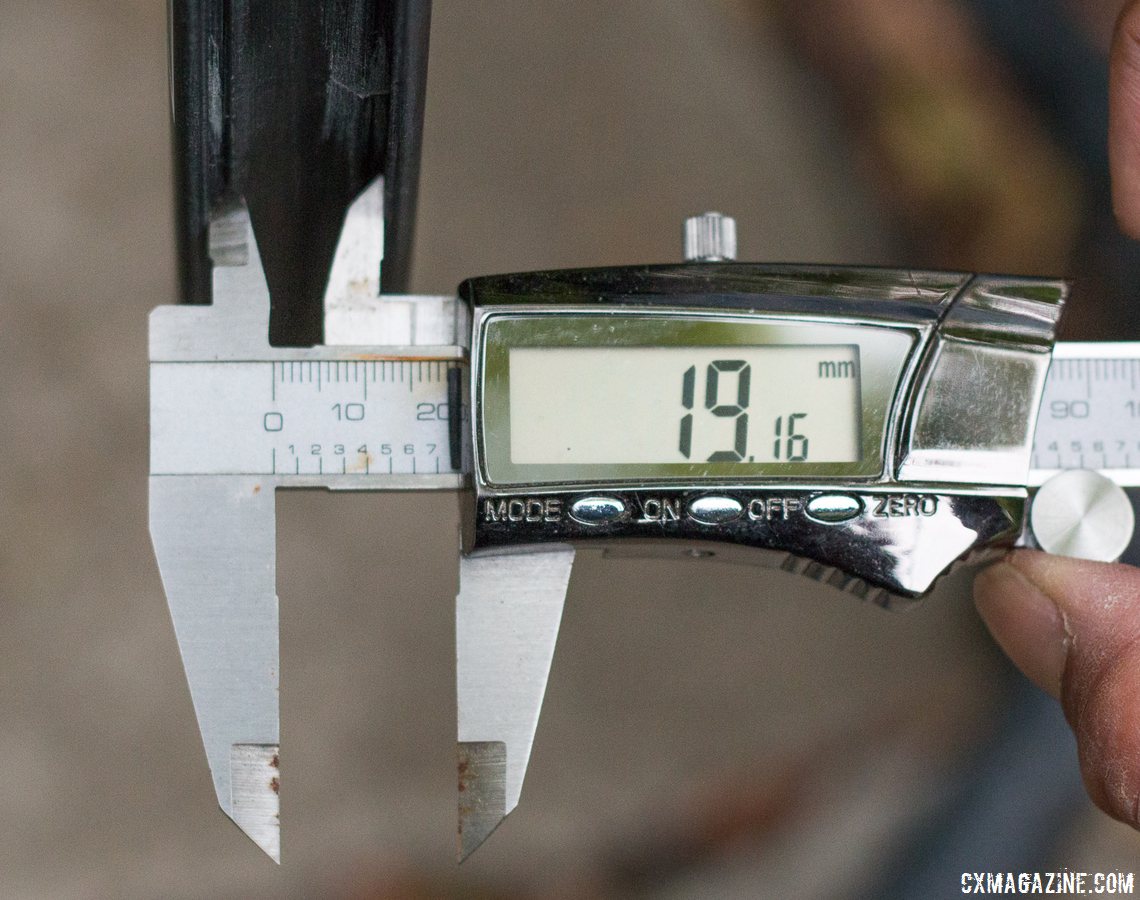
In 2015, a 19mm internal width rim (the 2015 Easton EC90SL carbon tubeless clincher rim) was among the widest for road. Now we see 25mm-wide rims. In 2010, many rims were just 14mm wide. Yet USA Cycling’s tire width rule hasn’t budged. © Cyclocross Magazine
Smaller tires also fly in the face of trends in other disciplines. Road tires have grown over the past decade. Road riders traded in their 23mm tires for 25mm or 28mm casings, and the trend has continued with many new road bikes accepting tires up to 32mm. A 28mm tire is 27% wider than a 23mm. If we applied similar growth to a 35mm tire? You’d be up to 44.5mm.
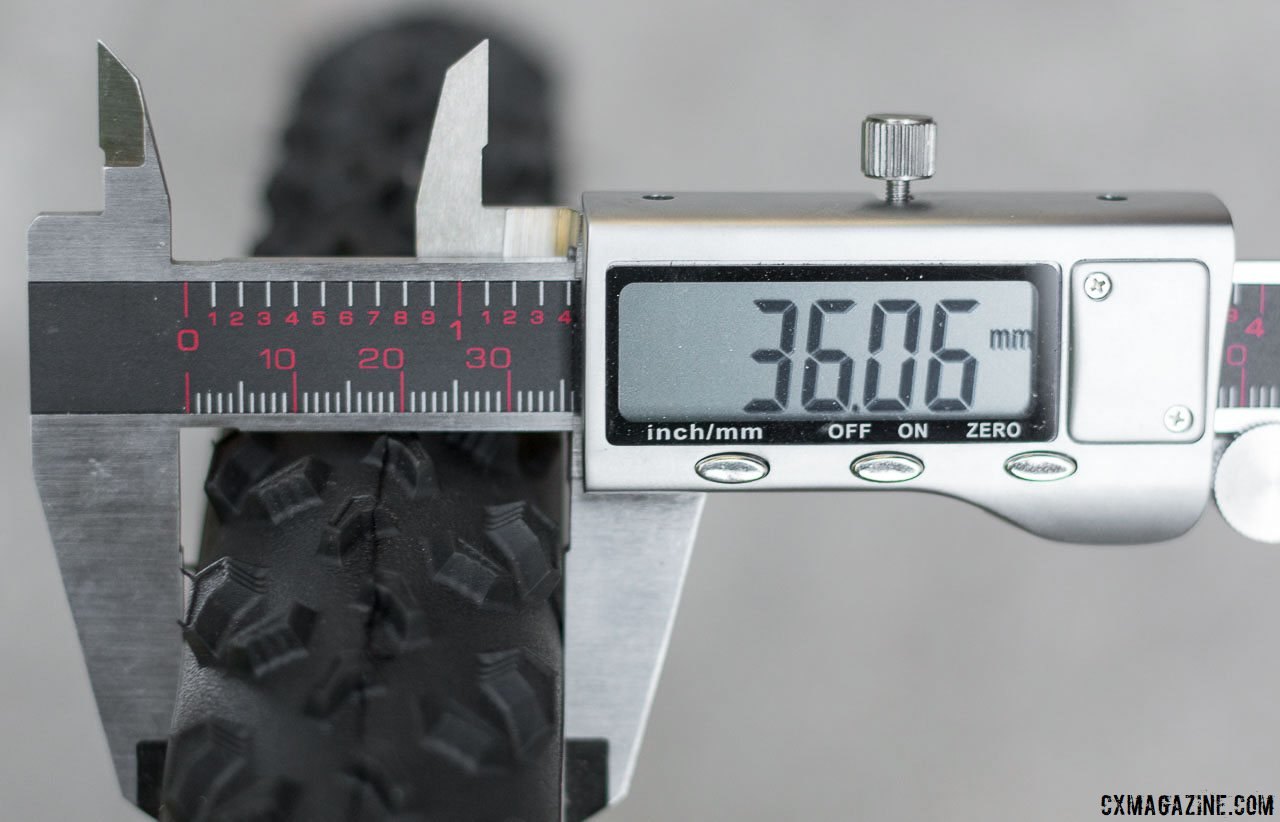
On a 22.5mm internal width rim, the 33mm Specialized Terra fails a UCI and USA Cycling (Nationals) tire width maximums, and for most retail-paying customers, that’s a great thing, except for one day a year. 36 mm at 30 psi. © Cyclocross Magazine
In the dirt, cross country mountain bike racers are regularly using 2.3″ tires, although 10 years ago, lots of mountain bikes were shipping with 1.9 or 2.0″ tires. UCI sanctioned competition, unlike cyclocross, has no maximum tire size.
Instead, the UCI applies a minimum value to XC cross country races of 45mm, with no volume regulations otherwise. Outside the world of racing, many mountain bikes are using even larger tires, with 2.4″ and even 3.0″ a common sight.
Why, then, is cyclocross singled out with such a limiting restriction when mountain bike racing, another discipline with high Junior participation, has no functional red tape regarding tire size? If governing bodies really care about separating the disciplines, they could still move the maximum width for cyclocross tires to 45mm.
The 35mm restriction, although more relaxed than the UCI’s 33mm maximum, still applies a limitation to equipment that stifles progress and innovation and leaves tires and wheels in the past.
More Rider, More Rubber
Limiting the size of a tire for all riders also puts those who are larger at an inherent disadvantage. While we joked about this in the past, with a blanket limit of 33mm, taller and heavier riders are unable to enjoy the same suspension and traction benefits provided by low pressures as their lighter competitors. For example, under the current rules, a 200lb rider like myself is using the same tire size as a 140lb rider, who is using the same size as a 90lb Junior.
Without the ability to add air volume to compensate for weight, the only variable which riders can manipulate is tire pressure. Anyone who has ridden a bike off-road more than once knows that even a small adjustment of pressure can be the difference is having and losing grip.
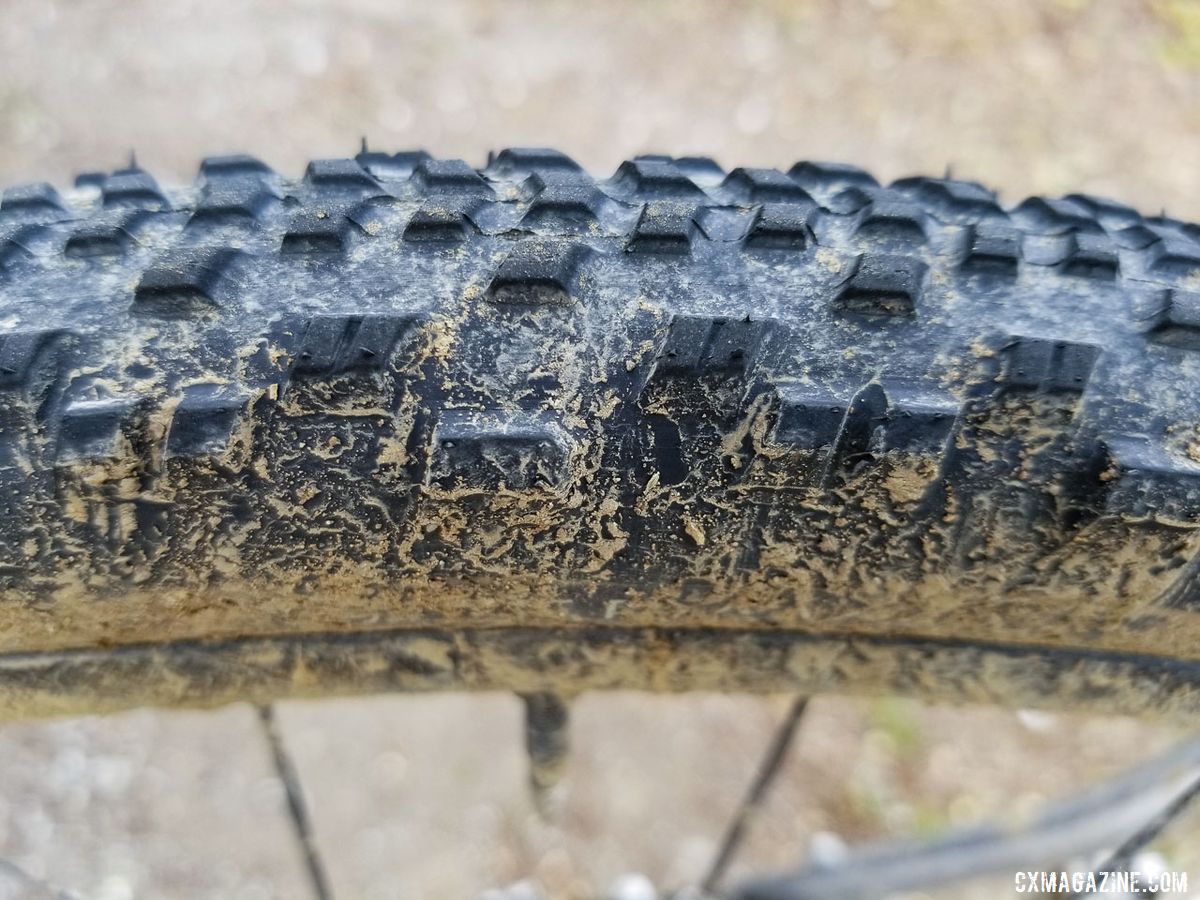
Teravail’s Rutland offers plenty of grip on wet, slippery dirt or mud, or loose gravel, and has been one of our favorites for bumpy cyclocross. Yet the 42mm tire isn’t legal at Nationals. © Cyclocross Magazine
Compounding the issue is the premium already placed on traction with a 33mm tire and the potential for burping a tubeless tire with pressures low enough to provide adequate grip. These factors together mean a reliable pressure for a heavy rider using a 33mm tire is likely going to offer less grip and a harsher ride than the same equipment set up for a lighter user. To regain some of that traction, larger riders may also resort to using more aggressive mud tires, which are both heavier and slower rolling than lower profile options.
Smaller Tires, Smaller Turnouts
Restricting tire size for categories normally facing little to no regulation may even have negative impacts on participation. Without regular checks for compliance, it is likely that many Masters and Singlespeed racers have never given strong consideration to their tire’s legality. Applying a width restriction at Nationals require some riders to tailor their equipment to a single race.
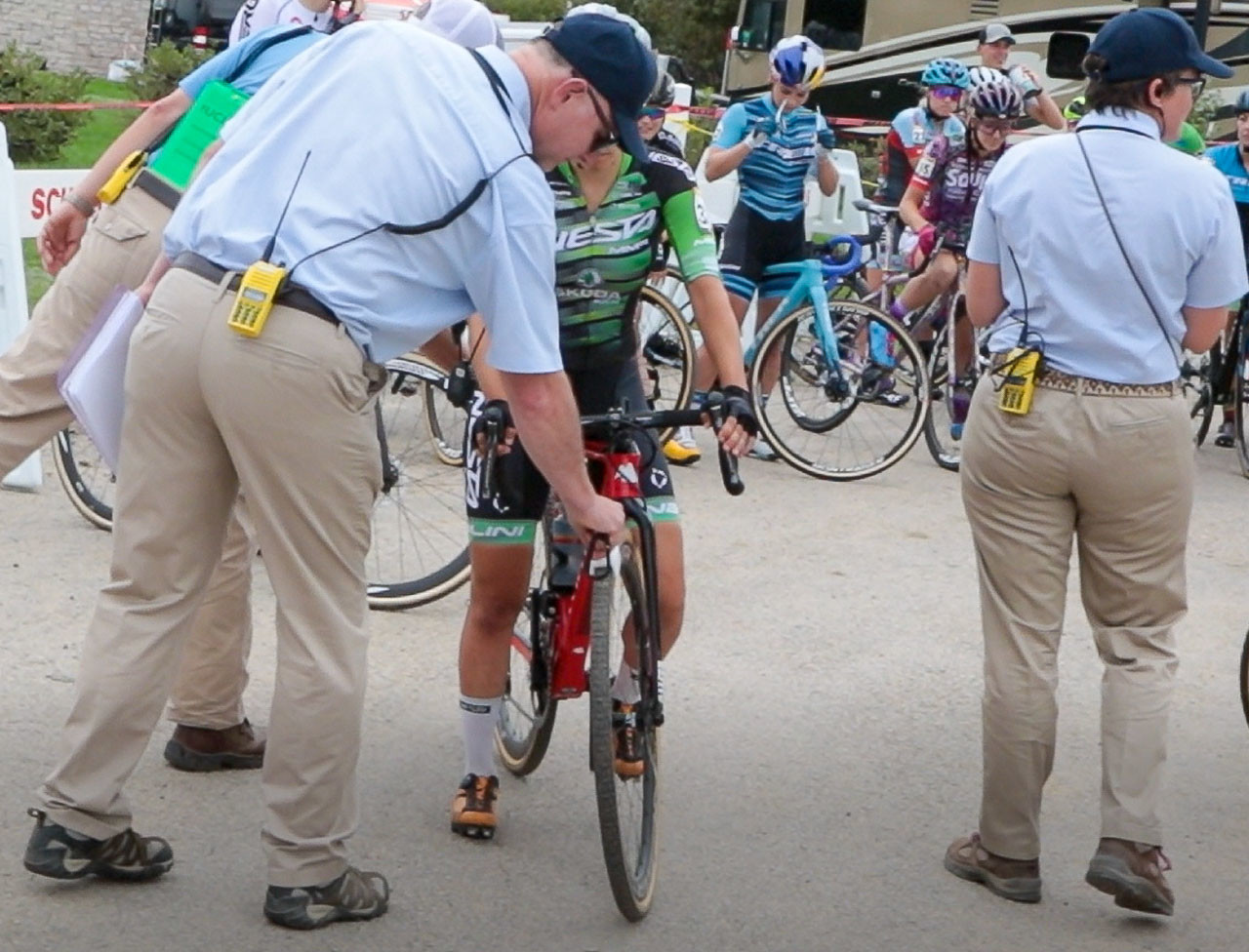
Will the USA Cycling act like the UCI and measure tires at 2019 Nationals? photo: UCI at Jingle Cross
The restriction also means that someone new to the sport may not be able to line up and participate with what they already own and race on. Even those who regularly race may find themselves purchasing new tires or even using tubulars for Nationals, a change that requires financial resources unavailable to some and is in direct opposition to the spirit of the original rule.
Participation is Everything
If USA Cycling intends to be a good steward of the sport, it should relax tire width restrictions or drop them entirely. For the Masters and Singlespeed racer, a larger tire has real benefits in both comfort and traction, plus it allows a more level playing field for exceptionally tall or heavy racers. There are morphological exemptions for bike fit due to body proportions, so why not tire size?
Applying an arbitrary limit to a single race on the calendar also creates an additional barrier for attendance. Some riders who have raced their season on wide tubeless rims and tires will be forced into purchasing entirely new tires or even complete wheelsets just to be compliant for Nationals, a cost that is not attainable for every participant.
Meanwhile, some age groups, especially the older Masters categories, barely have any entrants. Putting up additional barriers through one-day equipment regulations certainly doesn’t help welcome more to contest an already expensive event.
Furthermore, USA Cycling has been inconsistent about actually enforcing the restriction and frustratingly vague regarding future enforcement of the rule. If the governing body is going to demand compliance to an arbitrary width restriction, it should enforce the rule. Otherwise, what’s the point? Don’t leave racers scrambling to comply with a rule, only to never bother checking for compliance.
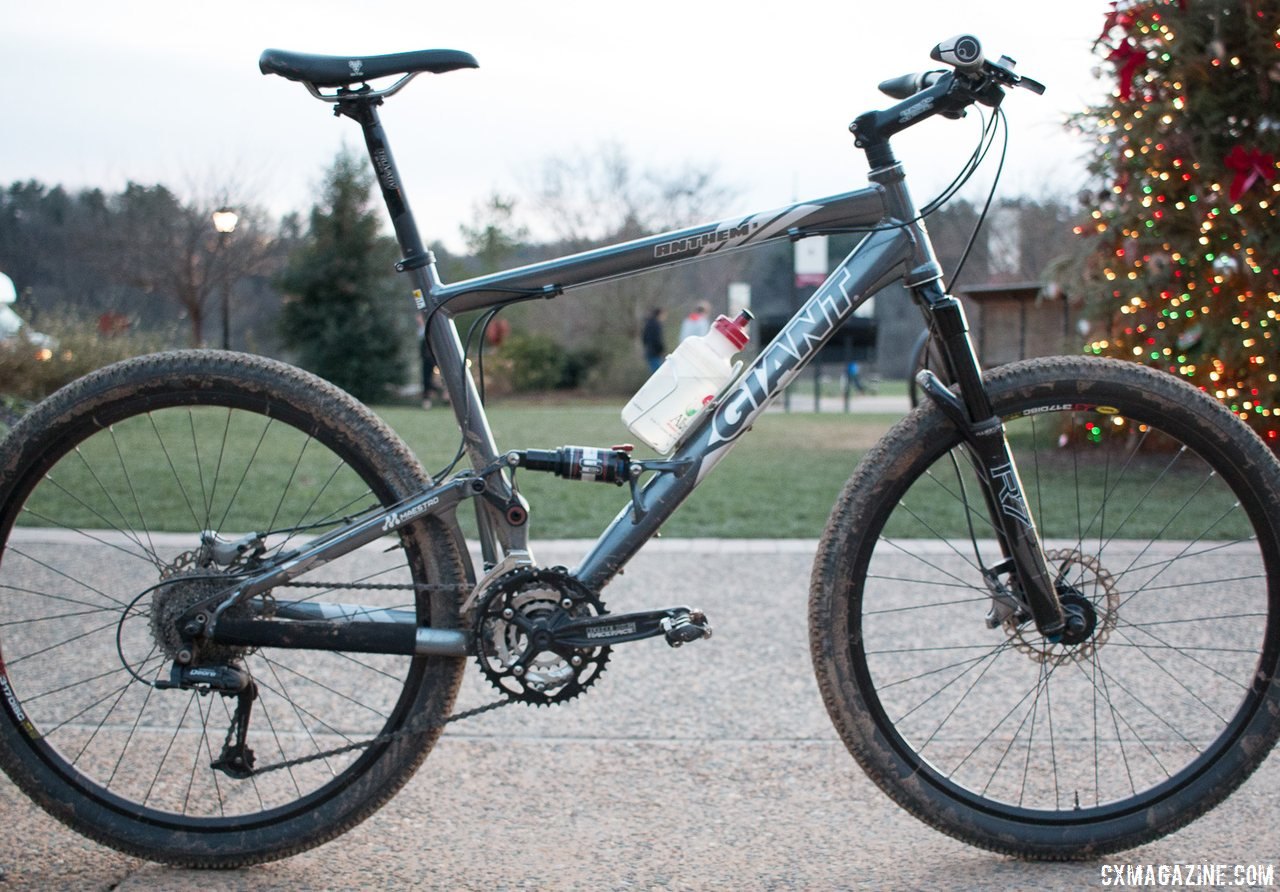
Marshall Gordon’s Masters 75-79 title-winning 2006 Giant Anthem 3. No flat bars, fat tires, no problem. © Cyclocross Magazine
Finally, the restrictions add confusion and limit the approachability of the sport. If a racer can do well with 36mm tires and less mud clearance, does sending them to a non-title race or DQing them before the start of a title race accomplish anything but impose traditions and someone’s sense of aesthetics?
In a time when cyclists are flocking to the unsanctioned world of gravel, where participation is encouraged and almost any functional bicycle is legal, perhaps the 35mm restriction has run its course.




























